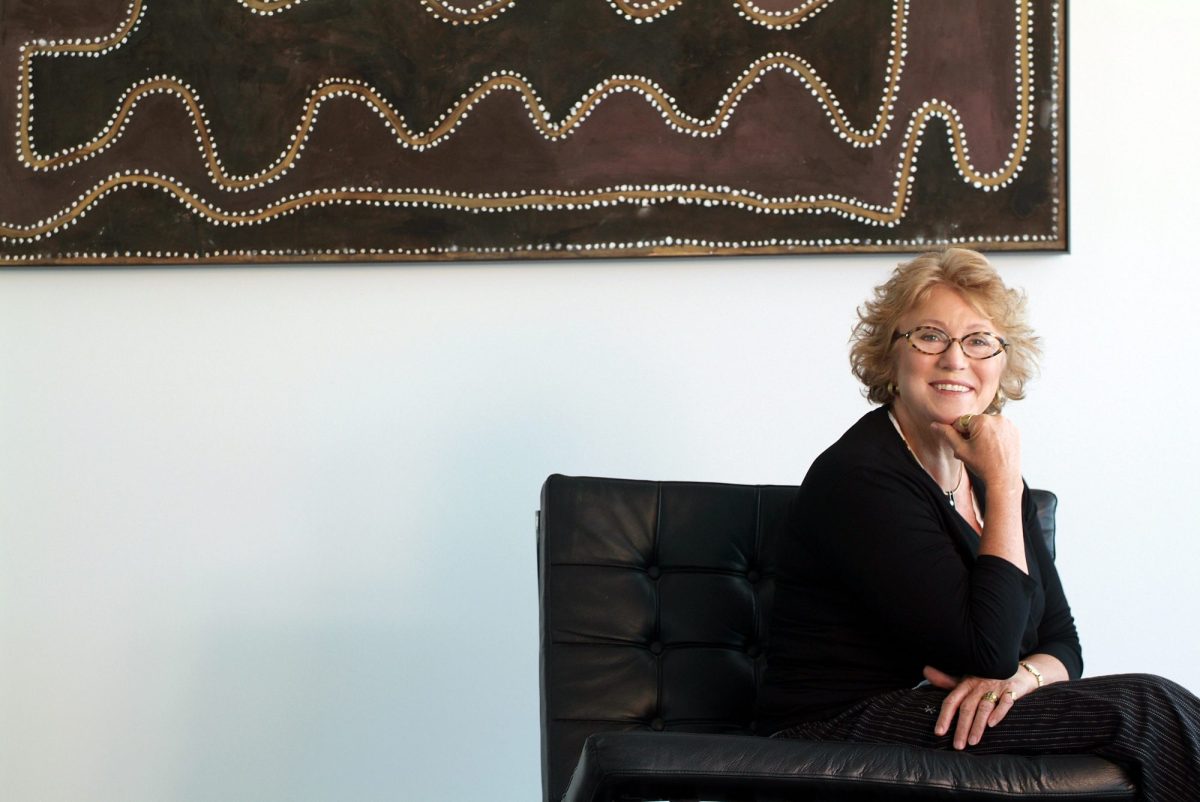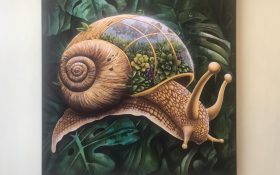Perth, Western Australia is the most remote capital city in that it is the most physically distant from any other capital city on Earth. For perspective, our closest capital neighbour is Adelaide, South Australia, which clocks in at just over 2000 kilometres away.
For Western Australians this remoteness makes certain resources scarcer, including the kind of arts and cultural exposure that exists naturally between neighbouring cities.
Such geographical distance creates a unique predicament for Perth’s great private art collections:
On the one hand, if a collection is private the owner has complete discretion as to when, how, why and which artworks they choose to display or lend as these artworks are personal possessions.
On the other hand, art’s greatest value lies in its function: to be viewed, contemplated, admired, researched, argued over and enjoyed by people. The more that people experience the artwork, the more the artwork’s societal value grows and the more it functions as art.
Read: All art collectors aren’t millionaires – but they deserve to be valued
It is with this conundrum in mind that ArtsHub contacted three of the foremost private art collections in Perth to get their perspectives on public access to private collections, highlight any public programs that they currently offer, and explore how they negotiate the relationship between privacy and access to art.
Holmes à Court Gallery
The Janet Holmes à Court Collection, owned solely by businesswoman and philanthropist Janet Holmes à Court, has a reputation as one of the best private art collections in the country. The Collection, which spans two galleries in West Perth and Vasse Felix in the south-west of Western Australia, comprises approximately 4500 artworks, of which about a third have been acquired from First Nations artists and another third Western Australian artists.
Since beginning her collection in the late 1960s, Holmes à Court has supported over 500 exhibitions with pieces from her collection locally, nationally and internationally.
The Holmes à Court Collection has an Instagram page, a Facebook page and a website, with a list of upcoming events and exhibitions, a noticeboard for new acquisitions, a downloadable list of recent active artists acquired by the Collection and a list of contacts.
Laetitia Wilson, who is the curator of the Holmes à Court Collection, is responsible for the marketing, sales, budgeting, exhibition management, staff management, installation and public programming. The Collection operates as a hybrid of a commercial gallery and non-commercial collection, which she finds a unique and rewarding place to work:
“We have exhibitions that just showcase Janet’s collection; we roll out about one or two of those a year. I also curate commercial shows of invited artists that include Janet’s Collection works. With these exhibitions we also partner with local and international programs like Perth Festival and the Indian Ocean Craft Triennial. It’s about the works of these living artists having a conversation with the artworks in Janet’s Collection.”
Collection Manager Louise Dickmann is responsible for the care of the Holmes à Court Collection, including records management, archiving and logistics. Apart from Dickmann and Wilson, and a technician that visits the Collection on Fridays, all other roles are outsourced.
Speaking on the unusual program and make-up of the collection, Dickmann says she finds great joy in the Gallery and Collection’s relationships with local artists, and its extensive lending program.
“It’s really difficult to think of a parallel operation,” she says. “Because Janet’s Collection is so local, we are able to have ongoing relationships with artists in the Collection. I think it is a very natural way in which the Collection and the Gallery work together.”
She adds, “Our lending program is enormous. We are constantly responding to requests from curators and researchers. Janet has moved thousands of objects, not so much prioritising her own pieces as much as raising the profiles of local artists in her Collection. She is very empathetic of artists and their work. She often says that artists make art to be seen, so she wants to support them in doing that.”

Wesfarmers Arts
Wesfarmers Arts is a private art collection owned by the Wesfarmers conglomerate. Started in 1977, the Collection is one of the longest standing corporate art collections in Australia and is a diverse representation of Australian art spanning from the 19th century until the present, with its most recent acquisitions from active artists occurring this year.
The Collection is representative of major periods and genres in Australian cultural history, as well as the diversity of what current Australian art practice embodies, including approximately 35% First Nations representation. As a museum quality collection, it regularly lends to museums and galleries across the country.
Wesfarmers Arts has an Instagram account, Facebook account and a website with an online visual archive of the Collection, as well articles on recent local, national and international collaborations.
Helen Carroll is the curator of Wesfarmers Arts, although her role encompasses almost all facets of the Collection’s management. This includes researching and collecting the work, making recommendations for acquisitions, looking after the works, organising exhibitions, sharing them with the community and floor talks with artists on Friday afternoons. She is responsible for everything except the installation, for which she uses a specialised team of local artists.
Despite largely being a one-woman operation, Carroll says she loves her job and takes a great amount of pride in it. “It’s almost like I died and went to heaven when I started in this role, and I’ve been working for Wesfarmers for 25 years. It is important to me as part of my role, not just to make a good investment on behalf of Wesfarmers’ shareholders, but also to add to this great body of Australian cultural heritage.”
In terms of public access to the Collection, Carroll says there are limitations to exhibiting, but that this is compensated for by a generous lending program: “We’ve basically had the same position since we started the Collection back in the seventies, in that we have the artworks on display in our offices. We don’t display the Collection in a formal gallery space, and I don’t expect that we ever will. We do, however, have an open lending policy, so we will always say ‘yes’ to an institution wanting to borrow one of our works.”
Carroll says that Wesfarmers Arts understands the importance of its Collection reaching as much of the community as possible.
“One thing about our Collection is that we have a no-storage policy. Everything we buy has to be out where people can see it, and I think that is quite unusual in a business context or for a private collection.
“We have this onus on us ethically and morally to make sure that these works are available to the widest possible audiences. It’s what the artists would want, and it’s what we want too.”
The Stokes Collection
The final private collection in this survey is The Stokes Collection, which is housed at Seven West Media Chairman Kerry Stokes’ offices at Australian Capital Equity.
According to his profile on the National Portrait Gallery’s website, Stokes’ Collection “is one of the world’s finest private museums, and is particularly rich in collecting areas such as Australian and Antarctic exploration, illuminated manuscripts, Indigenous art, European Impressionism and international modernism”.
Although the Collection declined to be interviewed, its team were very helpful in explaining the context and scope of their lending program.
The Kerry Stokes Collection works locally, nationally and internationally with galleries, museums, libraries, local, state and federal government institutions, tertiary education, scholars, researchers and community groups. The Stokes Collection currently has works exhibited for public display at Wanneroo Regional Gallery, WA Museum Boola Bardip, ANZAC House, Art Gallery of New South Wales and the National Gallery of Australia, with more lending to occur to other institutions in the coming months.
While acknowledging the generosity of The Stokes Collection and understanding its great value to the institutions to which it lends, it is important to mention for the purpose of this discussion that this Collection currently has no public-facing entity other than Australian Capital Equity. To contact the Collection for information, one must first contact the reception at Australian Capital Equity.
Read: Revolving doors: galleries close and others expand
This article serves to review the current approaches to public access by private collections in Perth and thank and acknowledge their generosity in time given and artworks lent, but also to start conversations between these collections and the public in ways that may not have previously existed. As Perth is physically removed from much of the rest of the world, the issue of access becomes acute. For art to work in all the wonderful ways it does, it must first be observed.





